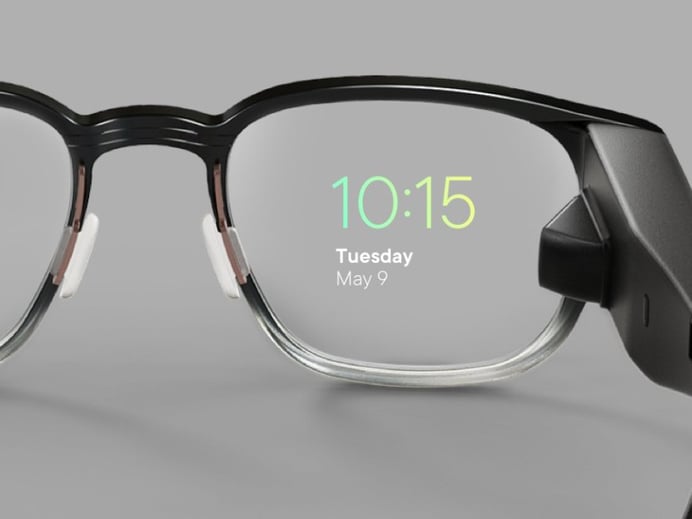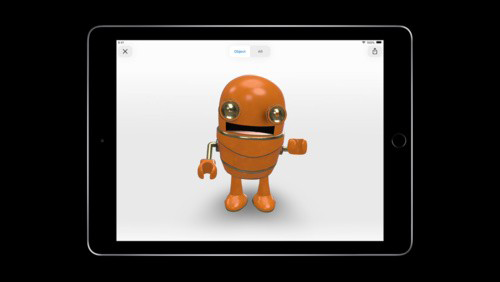.png)
First Published: 04 September, 2019
The combination of my role as Blue Star New Zealand's Augmented Reality "evangelist," and my own AR startup have provided me the luxury of more focus than most on AR over the last couple of years. During that time I've learned a great deal. Which is a good thing...because there is a lot to learn. But for the many who don't have the luxury of spending their days thinking about AR, it can feel like a bit of a "blind spot," so I felt it could be useful for me to try to "chunk it down" a bit, and offer some views on how I'm seeking things shaping up.
What follows is a bit of a summary of the things I focus on in my AR sessions with Blue Star's customers and answers to some of the questions I receive. There's a lot to cover so I won't do this justice, and by the time I hit "Publish" it will be out of date, but i'm going to give it a decent go...
Disclaimer - if you already know a bunch about AR you can skip this whole thing. It's not for you...
Technology wise, where is AR at right now? Right now it's about mobile AR. This is using the camera feed from your phone as a lens to the real world, with the digital content overlaid.
In the last two years, the hardware and software on new handsets has taken mobile AR from a basic experience appealing to only the most hardcore nerds, to an engaging, enjoyable one in the pockets of the masses.
The other form-factor in play is head-mounted AR, delivered via head mounted displays (HMD's) or goggles. There's plenty of interesting stuff going on there, with Vusix and North among the contenders for smart-glasses that would genuinely work as a "daily drive", Google Glass making a reappearance, Magic Leap with their amazing technology and yet-to-be-fully-understood market positioning, and Microsoft Hololens' enterprise-focused hardware to name but a few.
We (people who study this stuff) think we're still 18-24 months from seeing anything that looks like truly useful, consumer-ready, head mounted displays (HMD) but then that's really the blink of en eye at the pace life moves these days. Until then, HMD's will remain the domain of enterprise and very early adopters (geeks) and mobile AR is where most of us should focus (did I mean to do that?) our attention.

Image credit: North Inc
So if we are "stuck" with mobile AR for the time being, what can we do with it that adds real value?
The good news is, the answer is lots of stuff. The technology has really come a very long way in 18-24 months. Creating worthwhile AR experience has gotten infinitely easier and through the dominance of Apple and Google in the mobile market we now have approx 2bn AR-enabled devices in the pockets of the people we want to reach (and set to hit 3.2BN by 2022 according to ARInsider)
So therein lies Mobile AR's super-power. Reach.
We've seen VR get stuck in a "cycle of despair" - limited content -> expensive hardware -> small audience -> limited content...you get the picture. It's an over-simplification but it's close enough.
Mobile AR doesn't have that issue. It has its challenges (more on those below) but reach isn't one of them. So with billions of people now "AR-ready", our job as brands and as marketers is to identify the ones we want to talk to, earn their attention and deliver them value.
Sound familiar? It should. It's marketing 101. Let's therefore assume from here on in that a strong value proposition is table-stakes for any AR use case...
Of course, like any technology, mobile AR has its strengths and weaknesses. Here are some of them:
1. You need an app*
2. You need an app*
3. You need an app*
*Yes, webAR (AR via your phone's browser) is technically here and when it fully arrives it is going to make AR a LOT more accessible. It will also make-possible numerous new use cases that simply aren't practical with an app. But right now webAR not ready for primetime and even when it is, there will be some constraints that mean it won't necessarily offer the functionality that an app can provide. That said, the guys at Plattar are doing some cool stuff with the early versions of webXR and there are certain use-cases where it is already the right technology choice. We can talk more about webXR in a future post.

Image credit: Apple Inc.
The reality, for now, is that an app is pretty essential to delivering a mobile AR experience. Not such an issue if you have one, but even that does not guarantee the people you want to reach are going to get to experience your AR goodness. There's no getting away from the fact that "app fatigue" is a thing. I read a stat the other day that the average number of apps we download each month is zero. That's not many.
Does that mean apps are dead? No, it means that, as marketers, we have work to do to get our AR experiences in front of the people we are trying to reach. We need to ensure there is genuine value and we need to work hard to make sure our audience is aware of the value they can unlock by downloading the app. "Download our app so we can serve you propaganda" isn't going to work.
So, done well, AR offers businesses with existing app infrastructure a huge opportunity to deliver greater value to existing users and to increase app downloads. But what if you don't have an app? More on that below.
Duh. Obvs right? It is, but it's worth keeping from of mind that just because someone CAN use their phone to experience AR, doesn't necessarily mean they WILL. For example, if you ask me to scan your billboard and enjoy a 10-second experience I might do that. If you ask me to walk around with my phone out in front of me to experience your carefully-curated treasure hunt, my 9-year-old son will do that all day long; I might not be so keen.
So like all marketing tools and technologies, you need to consider what AR is good at and what it's not, and design the experience accordingly.
In the next post, we'll take a look at some of the things AR is really (really) good at...

Contact us if you have any suggestions on resources you would like to see more of, or if you have something you think would benefit our members.
Get in TouchSign up to receive updates on events, training and more from the MA.
